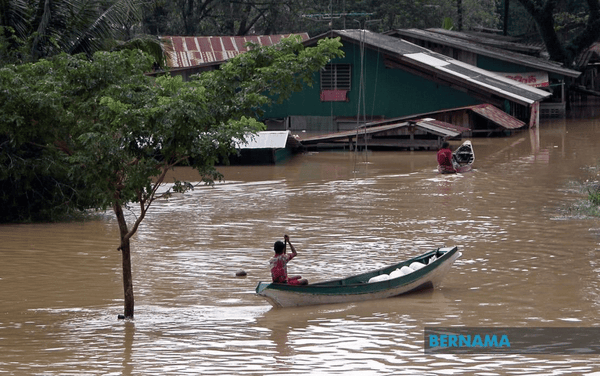KOTA BHARU, Dec 30 — Under the 12th Malaysia Plan (2021–2025), the government allocated RM950 million to the Department of Irrigation and Drainage for river conservation and unforeseen flood-related emergencies.
Of this amount, a total of RM410 million was earmarked for river conservation to reduce flood risks, while the remainder was allocated for various initiatives, including repairing structures damaged by floods nationwide.
This figure does not include other allocations by the government to address flood issues in the country, such as implementing flood mitigation projects in high-risk areas.
Experts estimate that flood management-related expenditures will continue to rise in the coming years, as global climate change is expected to intensify natural disasters, including floods.
They believe that Japan's flood management system is among the best in the world, and Malaysia could consider adopting a similar approach.
The flood management system developed by the Japan International Cooperation Agency (Jica) is based on an integrated approach encompassing infrastructure, technology, education, and multi-stakeholder collaboration.
Associate Prof Dr Haliza Abdul Rahman of Universiti Putra Malaysia (UPM) said that Jica employs a multilayered flood management approach involving three main components: structural measures, non-structural measures, and immediate post-flood recovery plans.
“Structural measures include the construction of dams, flood channels, and retention basins. Non-structural measures involve early warning systems, flood risk maps, and public education, while immediate post-flood recovery plans encompass community aid.
"For example, the Arakawa River project in Tokyo illustrates how a large channel was built to divert water from the Arakawa River to other areas, preventing urban flooding. The 6.3-kilometre-long underground tunnel can manage water flow of up to 200,000 cubic metres per second or approximately 720 million cubic metres per hour, resulting in no major floods in Tokyo over the past 30 years, even during heavy rainfall," she told Bernama.
Haliza said Malaysia needs a system like Jica’s due to the frequency and impact of disasters on society and the country.
"Climate change is altering rainfall patterns, which in turn increases the risk of flash floods and major flooding. The impact of these disasters is worsening due to the lack of integrated drainage infrastructure, as the current system still relies on outdated structure incapable of handling today’s exceptional rainfall," she explained.
Sharing similar sentiments, senior fellow at the Centre for Environmental Sustainability and Water Security, Universiti Teknologi Malaysia, Skudai, Prof Zulkifli Yusop, said now is the time for Malaysia to establish a flood management system akin to Japan's.
“Future floods are expected to be larger and more severe if there is no investment in mitigation structures. Kelantan is the only state (besides the Federal Territory) that still lacks a dam for either flood control or water supply, and such facilities need to be constructed in the upstream basin.
"In downstream areas, flood mitigation structures such as flood levees or flood walls can be built along rivers prone to overflow. Additionally, pumps, retention ponds, and diversion canals should also be considered," he added.
The dean of the Faculty of Bioresources and Food Industry at Universiti Sultan Zainal Abidin, Prof Hafizan Juahir, said Malaysia could adopt the system developed by Jica but emphasised the need to tailor it to local conditions.
"Among the features that can be adapted include data-driven planning using computer modelling and data analysis to predict floods, study their causes, and plan mitigation measures.
“Innovative infrastructure, such as building underground tunnels like the Tokyo Flood Tunnel to divert water to safer areas, could be constructed in major cities like Kota Bharu, Kelantan, and Kuala Terengganu, Terengganu.
“Additionally, Malaysia needs to invest in scientific research to understand the unique causes of flooding in the East Coast regions of Peninsular Malaysia, including the effects of climate change and urbanisation," he said.
Hafizan also recommended that authorities utilise artificial intelligence (AI) for more accurate flood predictions and deploy sensors to monitor river and drainage water levels, enabling real-time alerts to the responsible parties.
— Bernama


